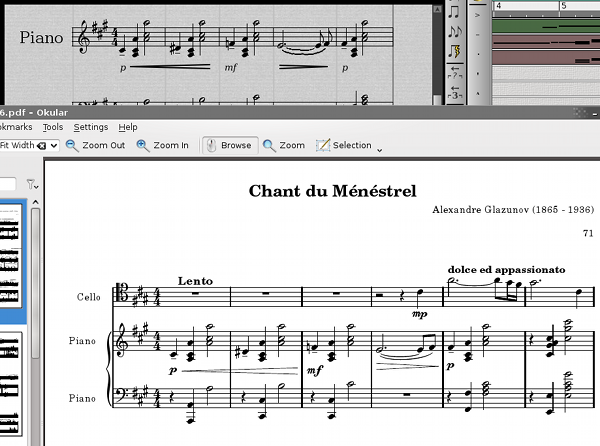

- LILYPOND NOTATION SOFTWARE HOW TO
- LILYPOND NOTATION SOFTWARE MANUAL
- LILYPOND NOTATION SOFTWARE TRIAL
Once that was done though, it was easy for me. (Then again, I also liked the introduction of the Sibelius banner, but I digress…) I admit that it was a touch cumbersome until I memorized the primary key commands for pop ups and remembered where the important (to me) notation and engraving settings were. It felt like a breath of fresh air to me as soon as I started using it. Ironically, I find Dorico to be rather intuitive from the get go. I’d also guess that many professionals have a whole suite of custom macros to do those things that are most important and labor intensive (especially finale users), which means that they can work fast, warts and all.
LILYPOND NOTATION SOFTWARE TRIAL
They likely wouldn’t have time to really become proficient excepting trial by fire, which isn’t worth it unless your REALLY unhappy with your program. For someone on a tight, high budget project they aren’t likely to make the switch because the potential for disaster would be too high. But open source projects either go where the most active members feel like going or don’t go anywhere, so the “next version” will be whatever it will be, when it finally arrives.ĭan, I had the same thought. They have gone down the rabbit hole of trying to tidy up the “untamed jungle” of the input syntax to earlier versions - I’m not sure how benefits from that, long-standing users know their way around the jungle already, and potential new users still don’t have a built-in GUI. Lilypond does seem to have lost its way a bit since the last “released version” came out 4 or 5 years ago. I think it has actually had quite an influence on the basic design of Dorico - for example you can organize a Lilypond project around the ideas of “players” “flows” and “layouts” if you want, though the are not called by those names, and there are other possible ways to organize a big Lilypond project, while in Dorico players, flows, and layouts are for all practical purposes “the only way”. If you go back to Daniel’s early blog posts on Dorico design, “Program C” was Lilypond. It’s called Musescore, though a lot of the low-level stuff that was “open heart score surgery” in Lilypond has been hidden under the user-friendliness blanket

There is now a “user friendly” version of Lilypond.
LILYPOND NOTATION SOFTWARE MANUAL
A great manual with a great index would fix all of that.

As someone who can be on very tight schedules with film scoring projects and arranging work, I just don’t have time to spare. Until then, I just can’t endorse the product. My hope is that with time, Dorico will, at least provide an insightful manual with a truly solid index for finding at least basic operations in such a huge manual. Today I spent three hours doing something I could have done easily in Sibelius in 15 minutes. But, when it comes to the basics of music input into notation software, and not having to spend endless hours on YouTube trying to figure out how to, in my example, add a measure, I feel that Dorico is lacking. I admire the Dorico team for what they are doing. I personally know some A-list orchestrators in the film industry (Hollywoood) who wilAl not use Dorico. In my opinion, I feel that I should be able to go to the index and look up: measures - adding and then travel to the page with the proper instructions and get the information I need.
LILYPOND NOTATION SOFTWARE HOW TO
Let’s say I am a beginner and I wanted to learn how to add a measure. I appreciate their effort in putting it together, but some basics are simply not there. My biggest complaint with Dorico is that if you are going to put out a product that changes the way composers compose, instead of just making it easier for composers to compose the way they always have, then you’d better have solid documentation.

But, I’m OK with working hard to learn it. But, in my humble opinion it is not intuitive at all. But, I bought Sibelius, and I was able to use it immediately without looking at any manual, as it was quite intuitive.ĭorico came out, and I was one of the first ones to use it and have kept up with the updates. Score was a nice effort way back in the day though is was too primitive at that time for me, and I appreciated Finale. I have used Score, next Finale, next Sibelius, and now Dorico. Though sometimes I long for the days of pen and paper. I don’t hate Dorico, and I’m amazed at that anyone can create any notation software. I tend to agree with Jack on a number of issues.


 0 kommentar(er)
0 kommentar(er)
